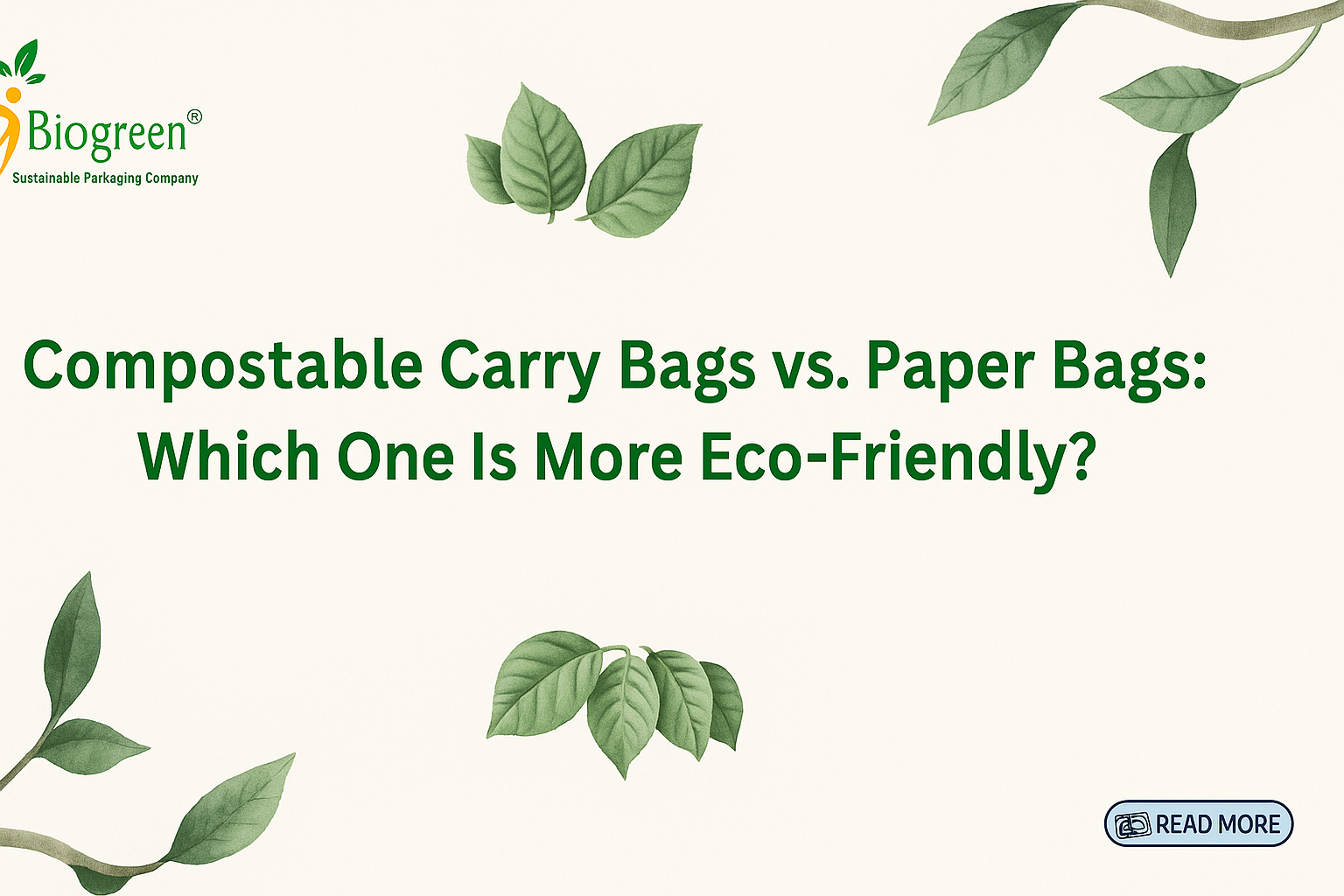Introduction
With sustainability on the grand agenda now, many people are interested in alternatives to conventional plastic bags. Compostable carry bags have been a great green alternative compared to paper bags.
But which is actually better for the planet? This guide compares the main differences between compostable plastic bags and paper bags so that you can really make a decision on which one to take.
What Are Compostable Carry Bags?
Compostable Carry Bags are made using plant-based materials like cornstarch, PLA (polylactic acid), and PBAT (polybutylene adipate terephthalate). Bags are formulated to disintegrate into organic matter and, when composted, leave no toxic residues behind.
Features Of Compostable Carry Bags:
Under optimal conditions, they are biodegradable and compostable.
Made from renewable plant-based materials.
Leave no toxic microplastics behind in the environment.
Great for carrying groceries, food waste, and general shopping needs.
What Are Paper Bags?
Paper bags generally use wood pulp – a renewable material – in their production. Although heavily used as substitutes for plastic bags, paper bags are recyclable and biodegradable. However, these environmental costs depend on how they are produced and disposed of as waste.
Main Characteristics of Paper Bags:
Recyclable and biodegradable material.
Need more water and energy to make than compost bags.
Compostable, but takes longer to degrade if coated or laminated.
Weaker compared to compostable plastic bags.
Compostable Carry Bags vs Paper Bags – The Main Difference
| Feature | Compostable Carry Bags | Paper Bags |
| Material | Plant-based materials like cornstarch, PLA, and PBAT | Wood pulp (trees) |
| Biodegradability | Fully compostable, leaving no microplastics | Biodegradable, but may take longer if treated |
| Durability | Strong, flexible, and moisture-resistant | Weak when wet, tears easily |
| Reusability | Can be reused multiple times | Less durable, usually single-use |
| Production Impact | Lower carbon footprint compared to paper bags | Higher carbon footprint due to deforestation and the production of energy |
Which One Should You Use for an Eco-friendly Life?
Both compostable carry bags and paper bags are eco-friendly alternatives to plastic, but Biogreens compostable bags offer a good balance of eco-friendliness with durability and convenience.
Use compostable carry bags if you like a long-lasting, water-resistant, and actually biodegradable option. Use paper bags when you have good recycling facilities and do not need a bag that is moisture-resistant.
However, the best option is to waste not, reuse bags as often as possible.
Conclusion
Compostable plastic bags and even paper bags have environmental advantages, but ultimately, compostable bags help you maintain a much lower carbon footprint while offering more functionality. Using certified compostable carry bags contributes to minimizing plastic waste and making the world cleaner.
FAQs
Do compostable carry bags offer real benefits?
You bet! Compostable carry bags turn into organic matter without leaving behind toxic stuff making them a greener option than plastic or even paper bags.
How long can you keep compostable carry bags?
If you store them right in a dry cool spot, these bags can stick around for months. Once they hit moisture and microbes in composting conditions, they break down in about 3-6 months.
What goes into 100% compostable carry bags?
They come from natural plant-based stuff like cornstarch, PLA, and PBAT. This means they’ll break down completely without hurting the environment.
Will compostable carry bags melt in water?
Nope compostable bags don’t melt in water, but they do break down over time when you put them in composting conditions. Some bags even break down in the ocean to cut down on sea pollution.





